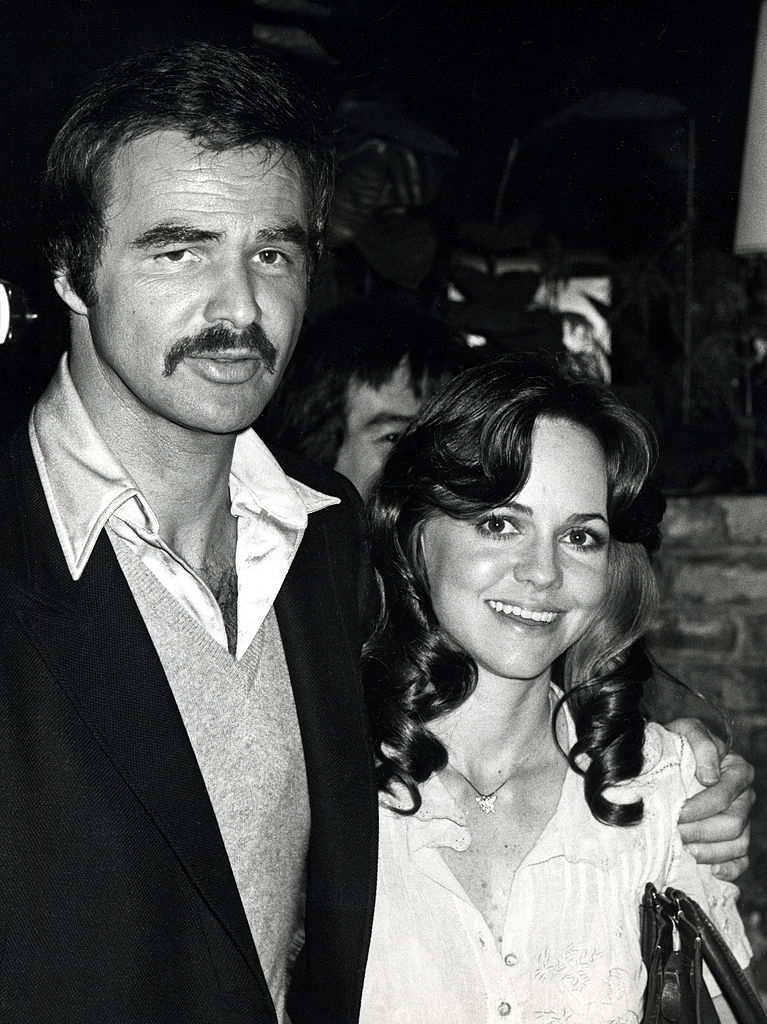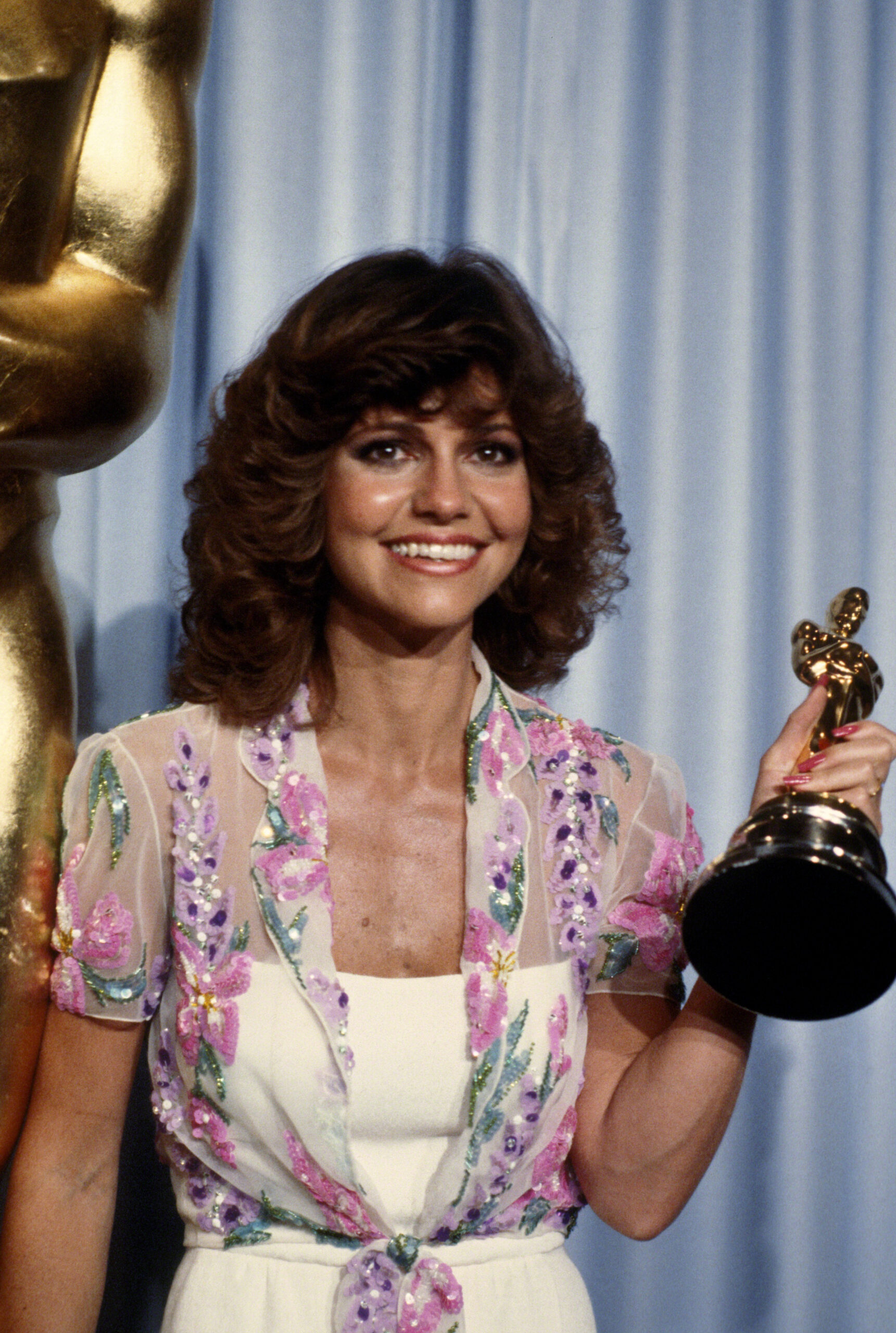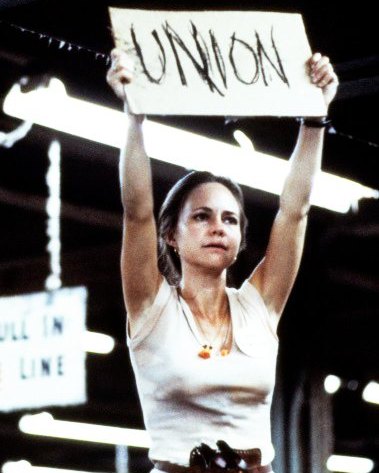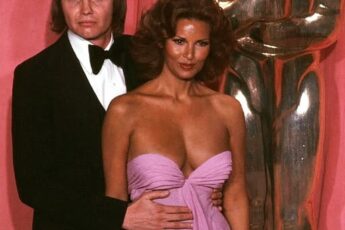The list is endless: minimum wage, worker safety regulations, healthcare, holidays, the 40-hour workweek, and protections against child labor. Without unions, even for individuals who are not members, none of these essential worker rights would exist.
Sally Field’s famous depiction of a woman defending her rights and those of her coworkers in Norman Rae serves as a constant reminder of our progress.

In addition to giving Sally the credit she deserved, her performance probably served as an inspiration for other powerful performances by actresses such as Meryl Streep in Silkwood and Julia Roberts in Erin Brockovich.
But as was already noted, her famous role came at a steep cost.
Sally Field was still attempting to shed her early TV persona as The Flying Nun and Gidget prior to Norma Rae. She felt she needed to show herself because Hollywood didn’t take her seriously. She regarded the role of Norma Rae Webster as an opportunity to reinvent her career, but she knew it wouldn’t be simple.
One of the main issues was that Sally’s ex-boyfriend, famous actor Burt Reynolds, was envious and unsupportive.
Field tried to clarify that it was only a part she was playing, but Reynolds made fun of her, saying, “Oh, so now you’re an actor… you’re letting your ambition get the better of you.” Reynolds disapproved of Field playing Norma Rae and famously told her, “No lady of mine is gonna play a whore.”
Sally remembered sitting next to her mother in a tiny screening room at Fox Studios when she first saw the movie, overcome with terror.
“The fear that I wasn’t sufficient to hold an audience for two hours was what raced through my mind,” she said.
suggested on the final day of production
Reynolds asked Sally to star in Smoky and the Bandit, which sparked their well-known romance. Their connection was intense and immediate at first, but it quickly became a nightmare for Sally.
She talks about how the movie star soon started to “housebreak” her, telling her “what was allowed and what was not,” and making her into a “shadowy version of herself.” Burt’s disapproval of her performance in Norma Rae was just the most recent example of all the criticism he had for Sally.

Field accepted the assignment in spite of his protests. Reynolds arrived on set and proposed with a diamond ring on the last day of production. Field remembers that she rejected his proposal because it felt “not me.” She had little to say after the awkward encounter other than “thank you.”
Field started to feel more self-assured and autonomous once Norma Rae wrapped up; it was almost as though her personal life and the role clashed. Field saw that her personality was beginning to “flare out,” something Reynolds did not like.
In response, he expressed “shocked disapproval.”
spent two weeks working in the mill every day.
Many may remember that the inspiration for Norma Rae came from the true tale of Crystal Lee Sutton, a textile worker from Roanoke Rapids, North Carolina, whose struggle for a workers’ union took place at a J.P. Mill of Stevens Textiles.
Field, who had already been passed up by a number of actresses, tried out for the part while on a quick trip to New York from the Hooper set. (Shirley MacLaine had originally indicated interest in the position, according to her book.)
Sally Field immersed herself in the life of Southern mill workers in order to be completely prepared for her play. According to IMDb, she and Beau Bridges worked in a factory for a while in order to conduct extensive study. Field became fully absorbed in the setting, taking on the characteristics of the employees, comprehending their hardships, and feeling the mental and physical fatigue they endured.
For two weeks, I worked at the mill every day; I didn’t have an 8-hour shift or work there all day, but I felt like it. The vibration in that weaving room is like the motion of a ship; the entire room trembles and you get seasick. I promise that two hours there seemed like eight hours anywhere. You must therefore adjust to it and develop sea legs. “I don’t know how they do it,” said Sally Field, “all the actors and crew were saying.”
Where was Norma Rae shot?
Norma Rae was filmed in Opelika, Alabama, although the true story of Crystal Lee Sutton took place in Roanoke Rapids, North Carolina.
Residents of the area acted as industrial workers for the scenes when filming began in May 1978. The Golden Cherry Motel, which has existed since the 1940s, served as the location for the motel sequences, while the Opelika Manufacturing Corp. was converted into the textile factory for the film.
The Opelika textile mill, the town’s first since 1900, closed its doors in 2004, but it wasn’t until 2016 that it was demolished. One challenging aspect of filming was the mill’s continuous hum, which made it challenging to capture the performers’ lines on camera.
A major occasion
It was a major event when Hollywood visited the modest Alabaman town of Opelika. Field met with the then-Gov during the filming. George Wallace, while many residents excitedly anticipated the prospect of Burt Reynolds, the megastar, stopping by the set to see his fiancée. You could feel the excitement in the air.
Although Burt did visit some of the filming locations, the main character, Sally Field, was the one who had the biggest impact on the local population.
Warner Williams, who was involved with the Opelika Chamber of Commerce at the time of Norma Rae’s filming, describes her as a “beautiful lady.” “She hung around the mill and dressed in old, tattered clothes the days before filming, getting ready for her role.”
Crystal Lee Sutton, Norma Rae’s true name
December 31, 1940, was the birthdate of Crystal Lee Sutton.
She recalls that Roanoke Rapids, where she was up, was a town that was polarized between managers and employees.
“Textile workers were denigrated throughout my life. The managers, attorneys, and physicians didn’t want their kids hanging around with us. They were the smartest and always wore new clothes. In 1980, Crystal told the Washington Post, “They were the majorettes and the cheerleaders. Anything exceptional came from your higher class of people.”
At the age of sixteen, Crystal Lee began working. She was working the 4 p.m. shift by the age of 17. to replenish batteries while working the midnight shift at a textile company. She had her first child at the age of 19, and by the time she was 20, she had experienced the devastating loss of her spouse.
She gave birth to her second kid at age 21 and her third in 1965.
In 1973, Crystal Lee Sutton, who was well-known for her brave stance as a union organizer, made headlines when she was let go from the J.P. For her pro-union activity, Stevens planted in Roanoke Rapids, North Carolina.
Sutton was a 33-year-old mother of three who was folding towels for $2.65 an hour at the time. The 1979 movie, which drew inspiration from New York Times reporter Henry “Hank” Leifermann’s 1975 book Crystal Lee: A Woman of Inheritance, honored her fight for workers’ rights.
“I’ve known a lot of women in my life, most of them much more educated and sophisticated, who would not have had the balls that she had,” director Martin Ritt famously remarked about Crystal Lee Sutton.
Crystal Lee Sutton’s candid assessment of the film
The author of the Norma Rae narrative, Crystal Lee Sutton, was unhappy with the final product.
It ought to have been a docu-drama, she thought. “It made me laugh and cry in parts,” Sutton said, acknowledging that he thought the film was humorous. “I just thought if they’re going to spend millions of dollars making a movie, I wanted it to be a good educational union movie, not a soap-opera love story like you can see every day on TV.”
After seeing the film, Sally Field also started crying. She said that she was moved to tears by the audience’s amazing response during the Cannes Film Festival’s Norma Rae premiere.
filed a lawsuit against the film’s makers.
Norma Rae made $12.5 million at the box office, but Sutton didn’t get any money.
The same was true of the novel Crystal Lee; it didn’t provide her anything.
Crystal Lee Sutton had to fight 20th Century-Fox after the movie’s popularity in order to win a tiny settlement, ultimately receiving $52,000, of which half went to taxes. Crystal utilized the money she had left over after paying off some of her loans to purchase a used Pontiac Trans-Am for her third spouse. She told the Washington Post, “He deserved something because he helped and supported me through all of this.”

Preston Sutton, her spouse, conveyed his profound respect for her bravery:
Preston Sutton remarked, “I told my wife that I don’t care if we have to live in a car because I’m proud of what she did and what she stood for.” “You had better believe that many people would like to have the courage to do what she did.”
Crystal Lee Sutton and Sally Field had a single encounter.
Meeting Sally Field, who portrayed her in Norma Rae, in California in 1980 was one of the high points of Crystal Lee Sutton’s life. It was a wonderful occasion when the actress and the real-life inspiration met up to promote the movie.
Cameras flashed as they posed together, hands up in a moment of triumph, and Sutton remembered meeting Field at a reception.
“We discussed kids,” Sutton remarked. She advised me to let her know if there was ever anything she could do to help.
The Oscar-winning film Norma Rae’s real-life creator, Crystal Lee Sutton, died on September 11, 2009, at the age of 68. At Burlington, North Carolina’s Hospice Home, she passed away from incurable brain cancer.
Dolly Parton’s relationship
Sally Field’s character in Norma Rae sings along to the Dolly Parton song “It’s All Wrong, But It’s Alright” while listening to the radio.
Ten years later, Field and Parton would co-star in the well-known movie Steel Magnolias, creating a lasting bond between the two legends.
The reality of the incident with the UNION sign
An incident in Crystal Lee Sutton’s life served as the primary inspiration for the well-known scene in Norma Rae where she writes “UNION” on a piece of cardboard and waits on a table until her coworkers switch off their computers.
Sutton’s crucial act of disobedience in 1978 was this dramatic moment, which has gone on to become one of the most well-known in American cinema history.
After trying to replicate a racist letter, the movie’s Norma Rae is summoned to the management office and dismissed.
She stands atop a table in the weaving room, writing “UNION” on cardboard and holding it up for everyone to see because she won’t go. This courageous deed is still regarded as one of the most potent and significant scenes in movie history.
The actual incident was described by Crystal Lee Sutton herself: “I took a piece of cardboard, wrote the word UNION in large letters on it, got up on my work table, and slowly turned it around.” As they gave me the victory sign, the workers began turning off their machines. The facility suddenly became quite quiet.
The movie poster’s veracity
One aspect of the movie poster is something that has irritated certain people.
The poster depicts a smiling, more professional Sally Field merely lifting her hands in the air, rather than the expected image of a determined Norma Rae in her work clothes carrying the union symbol. It seems strange, almost like the union sign was taken down on purpose.
This change in emphasis can be explained. The director, Martin Ritt, has acknowledged that he “couldn’t have cared less about labor unions” and that his primary focus was on narrating the personal story.

In a sense, the marketing of Norma Rae was also influenced by the movie Rocky.
In an interview, Norma Rae co-producers Tamara Asseyev and Alex Rose said that Rocky showed them the box office potential of a story about “a small person who succeeded.” After the idea was turned down by multiple other studios, they were able to sell it to 20th Century-Fox and Alan Ladd Jr.
Broken ribs: the way out of acute cuteness
Long renowned for her charming and humorous roles, Sally Field had become weary of playing the “cute” flying nun.
“I really didn’t have the courage to make any difficult decisions for a long time, but I was so tired of being boring,” she remarked.
Therefore, Norma Rae was a turning point rather than merely a breakthrough.
And Sally Field gave the part her all; in fact, she broke one of the actor’s ribs in a scene where she was fighting to keep from being pushed into a police car.
Don’t you think you’ll win anything?”
However, Sally Field experienced a mixture of shock and ecstatic happiness when receiving the Academy Award for Best Actress. Her skill had finally been recognized by Hollywood, but it had not been an easy journey.
As we now know, Field decided to take on the movie despite Burt Reynolds’ advice, which ultimately caused their relationship to fall apart.
We also know that Reynolds, who was nominated for Best Actress, declined to go to the ceremony with Field. “What the hell I intended to do there?” he asked in an angry tone when Field informed him that she was going to the Cannes Film Festival.”You don’t expect to win anything, do you?” he snapped, dismissing it as a “waste of time.”prior to ending the call.
When Reynolds declined to accompany her to the Academy Awards, she was fortunately saved by fellow actor David Steinberg and his wife, Judy.
“Well, for heaven’s sakes, we’ll take you,” David said, Field recounted. He organized a lavish celebration with Judy. They had champagne in the limousine when they picked me up. They made it quite enjoyable.

Norma Rae is still one of the most potent movies about workers’ rights more than forty years later, and Sally Field’s performance never fails to move.
Behind the victory, however, was a lady who sacrificed everything to make one of the most significant characters in film come to life. The reality? Like Norma Rae herself, success wasn’t something that came effortlessly; it had to be earned.






